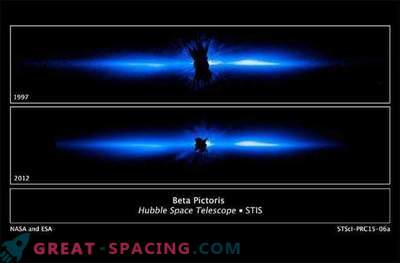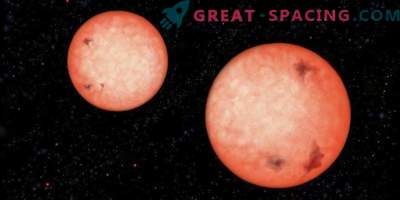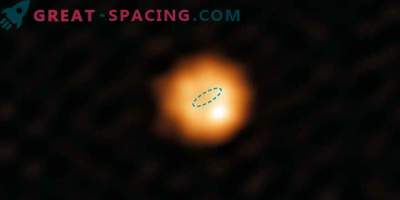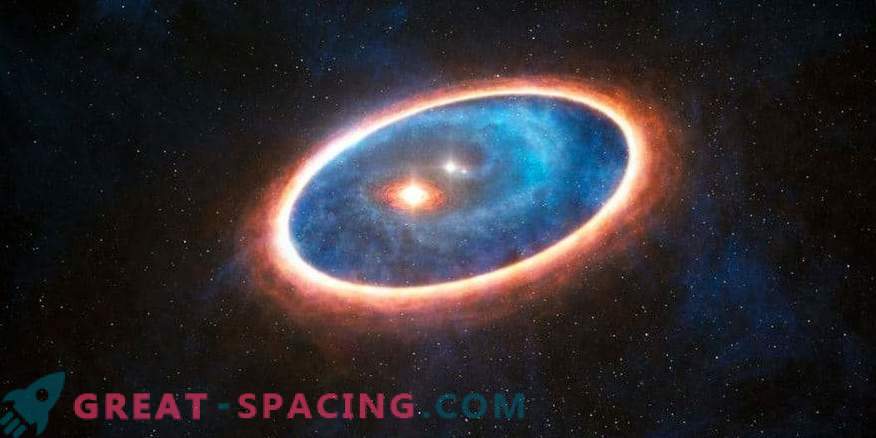
Scientists have noticed a circular disk around the Oph-IRS67AB system. Further reviews allowed us to analyze the chemical and physical properties.
Circular discs are material accretions represented by gas, dust, planetesimals and asteroids rotating in primary and secondary stars. Researchers have recently learned how to detect exoplanets, so finding such disks will help improve the understanding of planetary formation scenarios.
Recently, representatives from the University of Copenhagen (Denmark) reported on the discovery of a circular disk around the Oph-IRS67AB binary system. It is 500 light-years distant from us and lives in the territory of the Snake. The distance between the objects - 90 a. e.
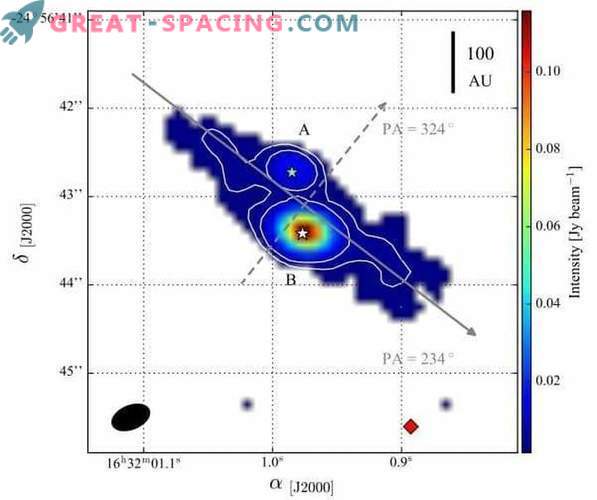
Continuous emission is higher than 4σ in the color gamut and values of 7 and 15σ in white contours. The synthesized beam is displayed in black ellipse. Gray solid and dotted arrows intersect at the geometric center, representing the direction and protruding perpendicular to the disc-shaped structure. Green and white are the locations of Oph-IRS67A and OphIRS67B. Red - point of the offset area
With the help of ALMA (Chile), the team monitored the Oph-IRS67AB in mid-2015. The review helped to determine not only the presence of the disk, but also its properties. In size covers 620 by 124 a. e., the slope is 80 degrees, and the estimated mass is 2.2 solar. These parameters show that a particular instance is three times the usual circular discs. Scientists also noticed that the high density region exhibits powerful radiation from carbon chain molecules (C 2 H and c-C 3 H 2). Most likely the radiation is associated with the material of the inner shell, for example, the outflow cavity, the structures of the spiral arms or dust. High density area chemistry is different from disk.
In addition, we managed to find out that there is no methanol emission in the system, which may be caused by the presence of a disk. Sulfur dioxide transition appears optically dense and exhibits compact emission, seen only around Oph-IRS67B.
The researchers noted that a review of other molecules and more detailed observation of the transition of carbon chain molecules is needed to obtain details of the characteristics of a high-density region. A higher resolution review will allow you to better understand the issue of circumstellar disks.









